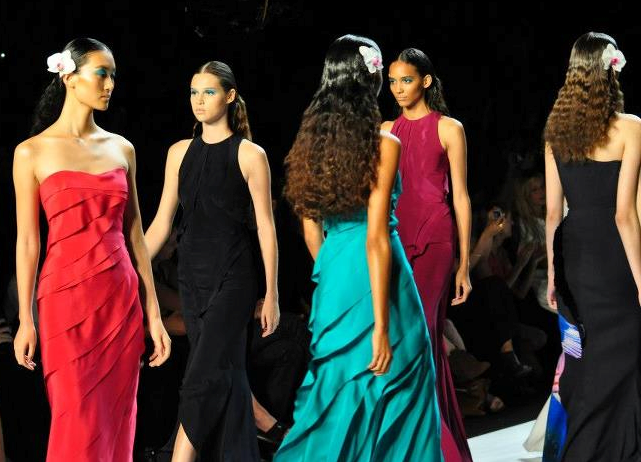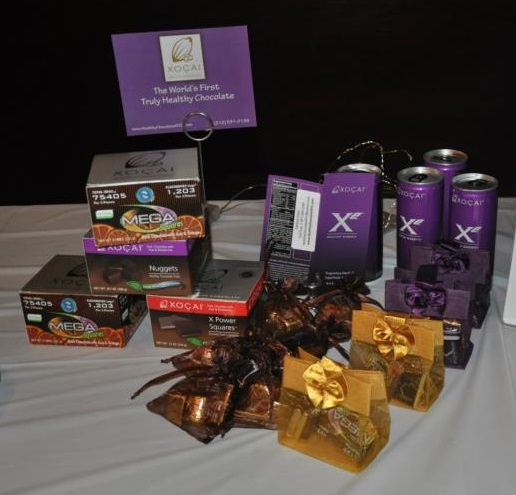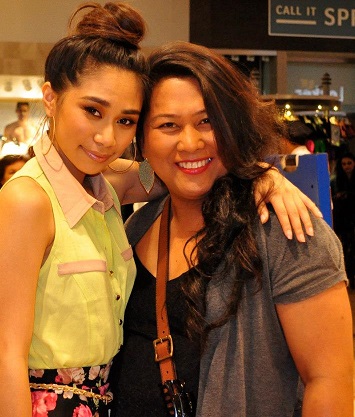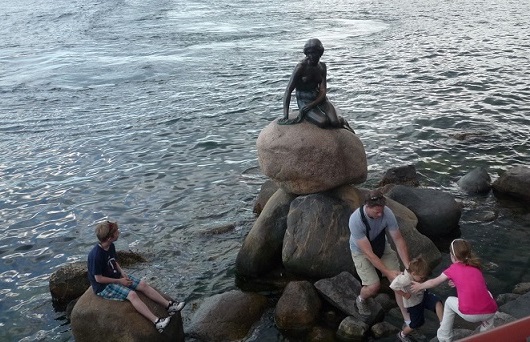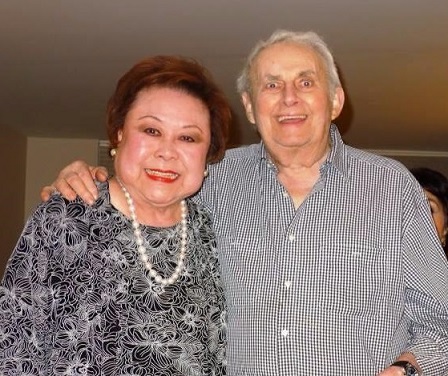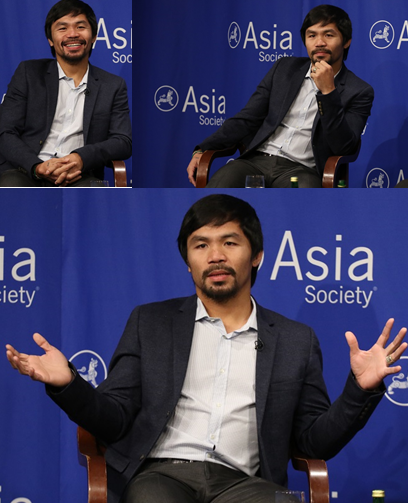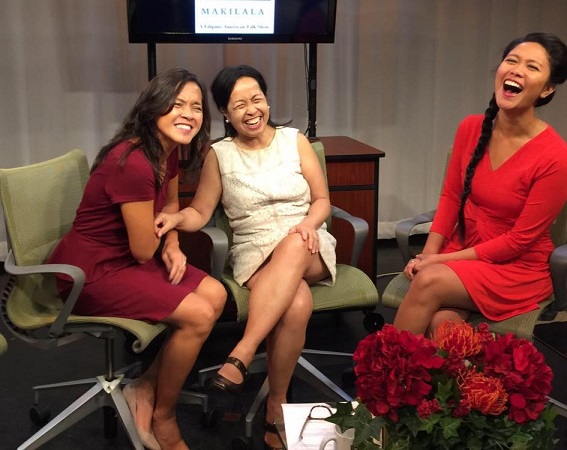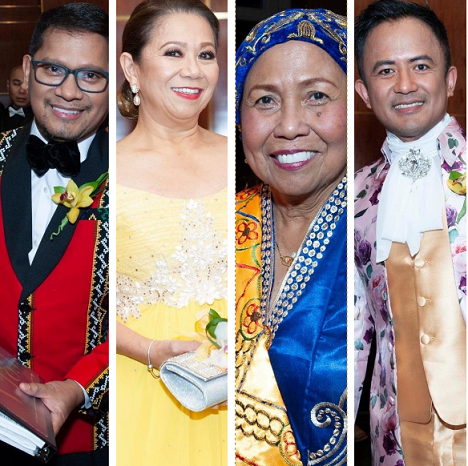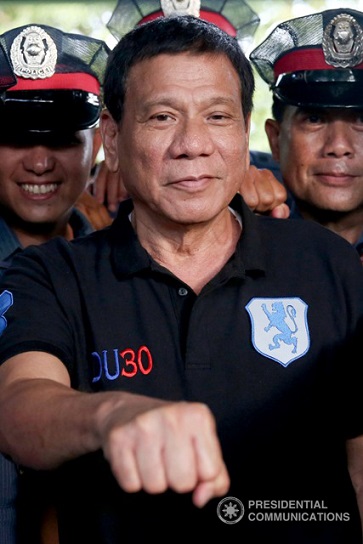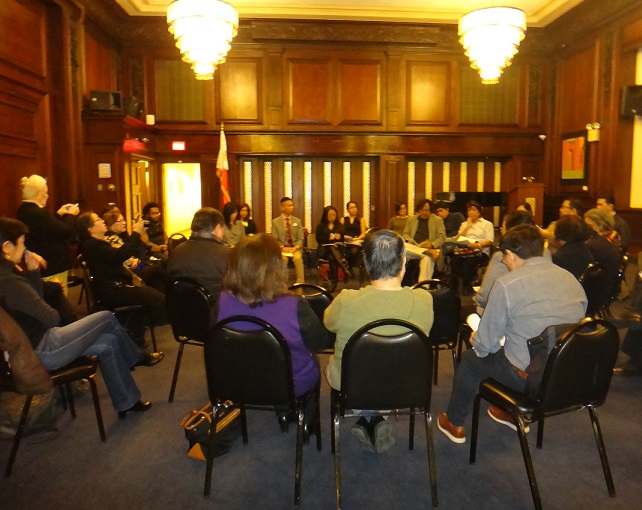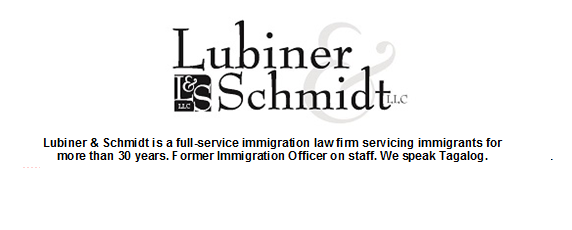4 days in February in NYC: From paranoia to euphoria
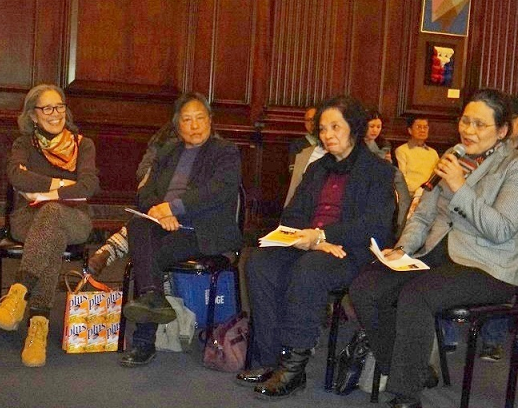
Former activists share their colorful recollection of People Power as it played out in NYC. From left, Jane Orendain, Therese Rodriguez, Aleli Alvarez and Gertrude Pajaron. The FilAm photo
In 1986, or 29 years ago, the Philippines was on the cusp of something historic. What it was no one knew. What was apparent was that dictator Ferdinand remained in power, but opposition leader Cory Aquino was ascendant and very popular.
The February 7 snap elections turned out to be critical. Marcos won the voting with a large margin over Aquino, but charges of massive fraud were hurled at his government. Comelec tabulators walked out in protest. Anti-Marcos demonstrations began popping up and swelling in Metro Manila and other parts of the country.
On February 22, then-Defense Secretary Juan Ponce Enrile and Constabulary Chief Fidel Ramos announced they were disconnecting from the Marcos Government. Several hours later, Cardinal Jaime Sin and Butz Aquino, brother of the murdered Ninoy Aquino, urged Filipinos to come out and provide them cover because Enrile’s and Ramos’s lives may be in danger. Over four days, military tanks and rosaries converged on this once-nondescript highway called Edsa. A peaceful, prayerful revolution forced the Marcos family to flee, bringing with them their cronies and Pampers boxes full of cash and jewelry.
Meanwhile in New York City, the Filipino community was in a parallel universe.
“CNN was running the news on primetime almost every day. You couldn’t miss it,” said Therese Rodriguez, who gave her personal recollection of those four days in February at the forum, “New York During EDSA Revolution 1986” held at the Philippine Consulate.
Currently the CEO of the Asian and Pacific Island Coalition on HIV or the APICHA Community Health Center, Rodriguez was an activist at the time. Her family, fearing she would be arrested, had urged her to go to the U.S.
Pro-Aquino FilAms were massing in front of the Philippine Consulate daily. “We were literarily every night in front of the consulate,” Rodriguez recalled. Some of them would come from work and go straight to the demonstrations.
Jane Orendain, formerly a member of the Bayanihan dance troupe, recalled at least five opposition groups that met and gathered regularly outside the consulate building. “We didn’t really work together, but after the snap elections, we banded together,” she said.
Harassment gave way to paranoia
The speakers shared how the pro-Aquino forces suffered harassment from the U.S. government as it continued to support Marcos.
“We had to have lawyers, we had to,” stressed Aleli Alvarez, currently a board member of APICHA. “Some were reporting the activists to the immigration office. There was a lot of paranoia.”
“We felt the fear,” said Rodriguez. “There was a lot of rumor mongering.”
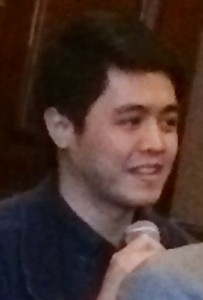
Patrick Jalasco, grandson of Fidel Ramos and a student of Columbia University, says youth can learn from the stories. Photo by Vivian Talambiras-Cruz
The community was divided into pro-Marcos and pro-Aquino forces, according to the speakers. Sometimes, they would find themselves attending the same gatherings, and a heated exchange of words would follow.
The two factions would bury their differences when it became clear that Cory Aquino was going to be the first woman president.
“There was a lot of political differences that had to be ironed out,” said Gertrude Pajaron, chief development officer of APICHA. “But the groups coalesced and supported Cory Aquino.”
Yellow Cory T-Shirt
Loudette Avelino brought to the forum a ‘yellow Cory shirt,’ very popular among pro-Aquino followers. She was one of the oppositionists who became part of the transition team that secured the consulate building after the Marcoses fled on February 25.
“Obviously, it was a euphoric time,” began Avelino, a founding member of the Assumption Alumni Association Abroad. “Filipinos were admired worldwide because of the peaceful ouster of the dictator. We walked the streets of New York wearing yellow T shirts and yellow bandanas. People gave us thumbs-ups, made us really proud to be Filipinos.”
Lawyer Francisco ‘King’ Rodrigo, who was active with the Ninoy Aquino Movement, became the Consul General in New York succeeding Ambassador Ernesto Pineda.
“King entered the Philippine Center, asking how he could help,” recalled Avelino. “He moved quietly to secure the Philippine Center and the townhouse.”
When the pro-Aquino forces got into the townhouse, which was used then as the Marcos residence, they saw moving vans leaving the building. “The townhouse was in shambles, with some crates left on the floor,” she said.
“Everyone asked, what can we do?” Avelino continued. “We began assigning tasks (to volunteers), cleaning floors, sleeping on the floors.” She said some employees from Philippine Airlines were the first to come down, acknowledged the new government, and offered support to the volunteers.
Rodrigo served as consul general until 1988. It was during his two-year term that the consulate introduced the Philippine Independence Day Parade on Fifth Avenue (later moved to Madison Avenue) and the Simbang Gabi tradition.

